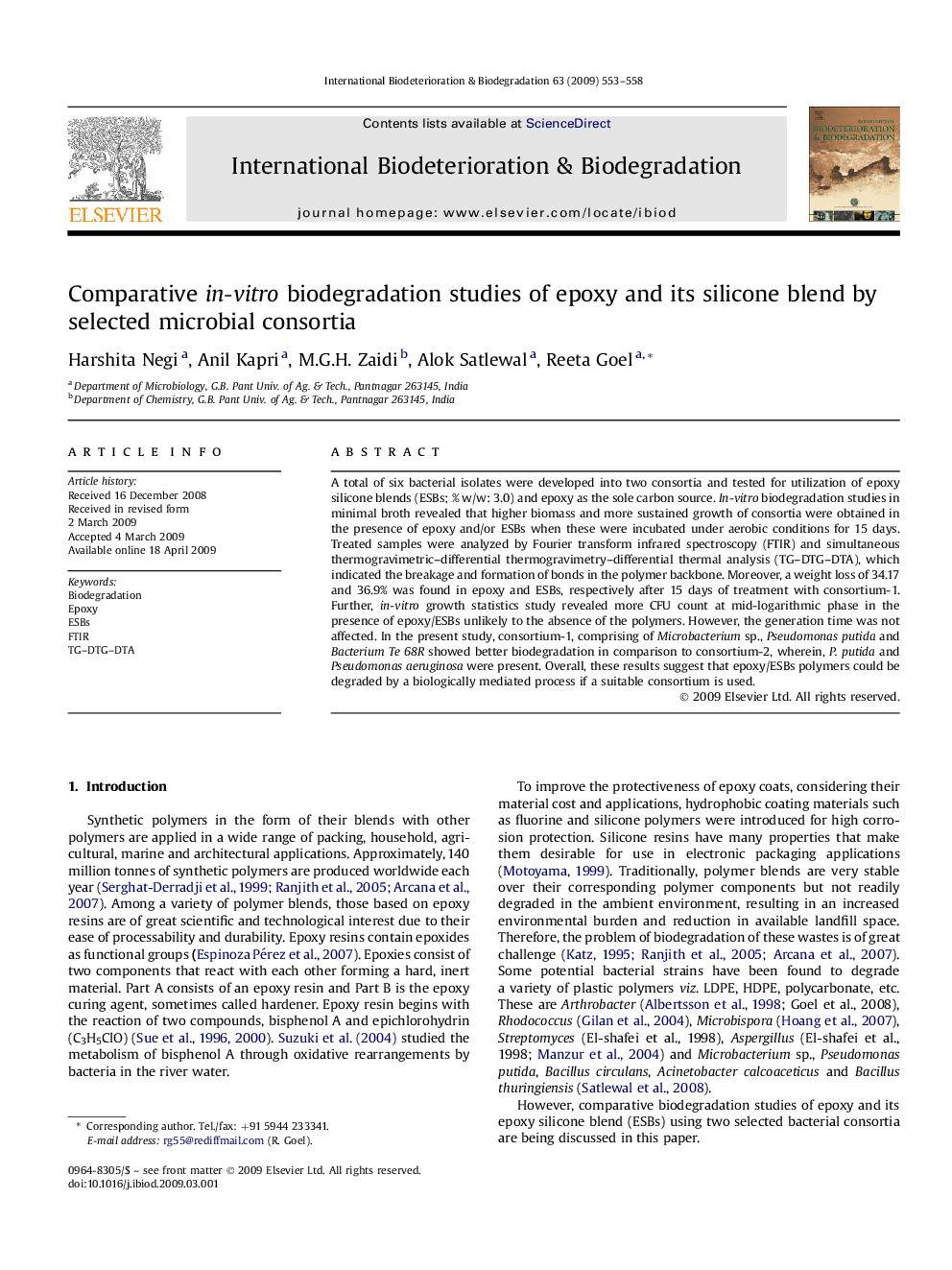| Article ID | Journal | Published Year | Pages | File Type |
|---|---|---|---|---|
| 4365605 | International Biodeterioration & Biodegradation | 2009 | 6 Pages |
A total of six bacterial isolates were developed into two consortia and tested for utilization of epoxy silicone blends (ESBs; % w/w: 3.0) and epoxy as the sole carbon source. In-vitro biodegradation studies in minimal broth revealed that higher biomass and more sustained growth of consortia were obtained in the presence of epoxy and/or ESBs when these were incubated under aerobic conditions for 15 days. Treated samples were analyzed by Fourier transform infrared spectroscopy (FTIR) and simultaneous thermogravimetric–differential thermogravimetry–differential thermal analysis (TG–DTG–DTA), which indicated the breakage and formation of bonds in the polymer backbone. Moreover, a weight loss of 34.17 and 36.9% was found in epoxy and ESBs, respectively after 15 days of treatment with consortium-1. Further, in-vitro growth statistics study revealed more CFU count at mid-logarithmic phase in the presence of epoxy/ESBs unlikely to the absence of the polymers. However, the generation time was not affected. In the present study, consortium-1, comprising of Microbacterium sp., Pseudomonas putida and Bacterium Te 68R showed better biodegradation in comparison to consortium-2, wherein, P. putida and Pseudomonas aeruginosa were present. Overall, these results suggest that epoxy/ESBs polymers could be degraded by a biologically mediated process if a suitable consortium is used.
